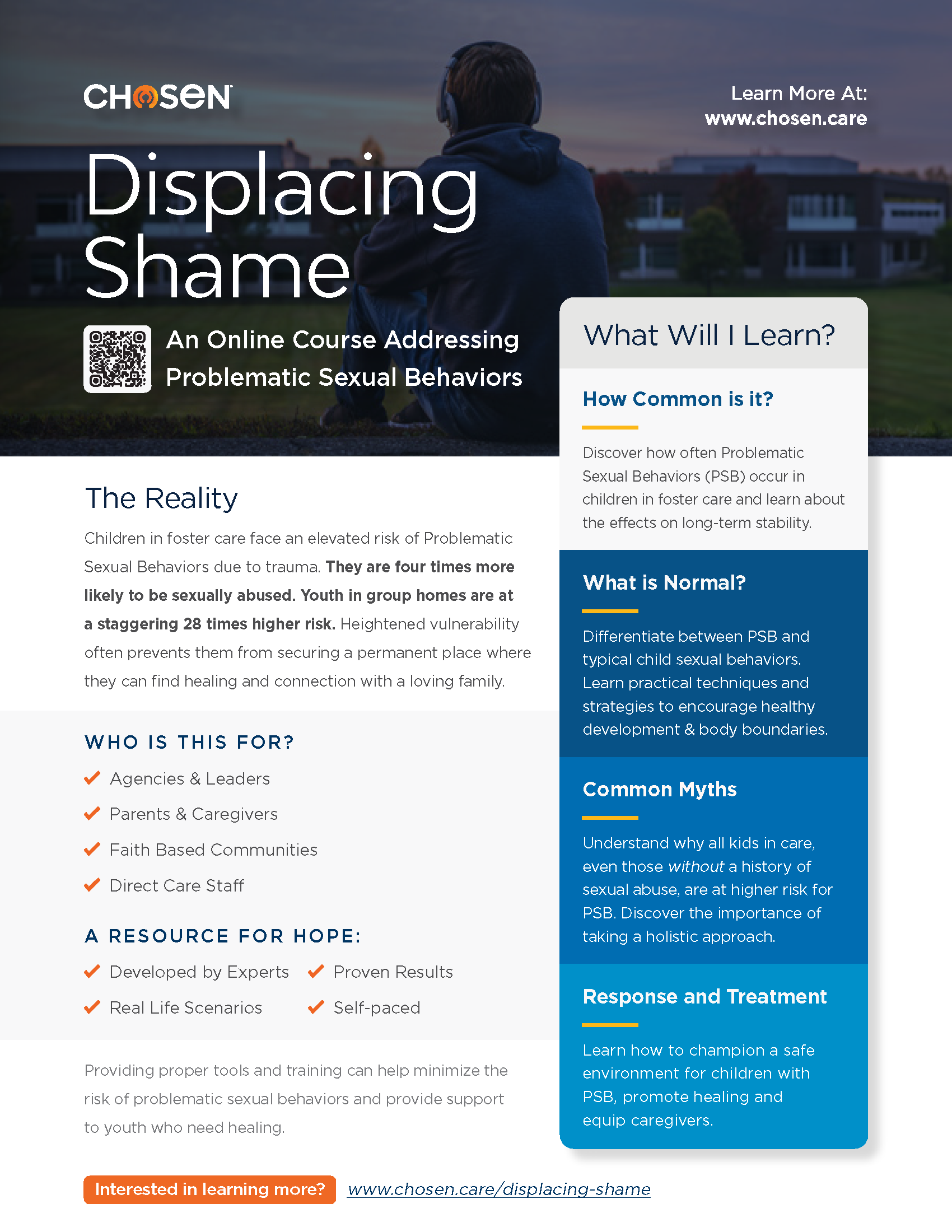Displacing Shame | Problematic Sexualized Behavior
May 8th and 15th from 6:30 pm - 8:00 pm
Two part online training presented by Chosen Care
Have you ever felt alone, or worse yet judged as you try to help your child navigate challenging behaviors like pornography addiction or sexualized behaviors? Do you live with fear of how your child’s decisions may affect your other children or family? Fear of what others would think if they knew you were struggling with this as a family? Maybe you opened your home to a child, full of hope, only to have problematic sexual behaviors come seemingly out of nowhere, causing deep fear and doubt.
We get it. At Chosen, we know that these behaviors can be stigmatizing and isolating. We often hear from parents and caregivers that they deeply desire to provide support for their child while at the same time feel afraid, ill-equipped, and unprepared. The journey can be heavy both for the struggling child and parents/caregivers.
Dates: May 8th and 15th from 6:30 pm - 8:00 pm
LEVEL 101 – Introduction to Problem Sexual Behavior (PSB) in Children - May 8th
Target Audience: Anyone who works/serves children and their families experiencing PSB.
Prerequisite: None
At the end of this training, a learner will be able to:
- Define problem sexual behavior (PSB) in children.
- Understand the prevalence and impact of PSB in children.
- Explain normal age-appropriate sexual development.
- Identify and discuss the differences between PSB and normal sexual behavior in children.
- Discuss misconceptions of PSB in children.
- Understand the risk factors of PSB in children.
- Respond to children experiencing PSB.
LEVEL 301 – Caring for Children Experiencing Problem Sexual Behavior - May 15th
Target Audience: Caregivers
Prerequisite: Level 101 – Introduction to Problem Sexual Behavior in Children
At the end of this training, caregivers will be able to:
- Establish an environment of clear and healthy boundaries related to sexual behavior, so the home is safe for all children in the home.
- Create connection with a child that is experiencing PSB.
- Discuss safety strategies and how to respond to concerning behaviors.
- Identify and manage personal triggers and throughs about their child that is experiencing PSB.
- Identify ways in which they can take care of themselves while they care for a child experiencing PSB.
- Understand what treatment options are available for their family and child.



